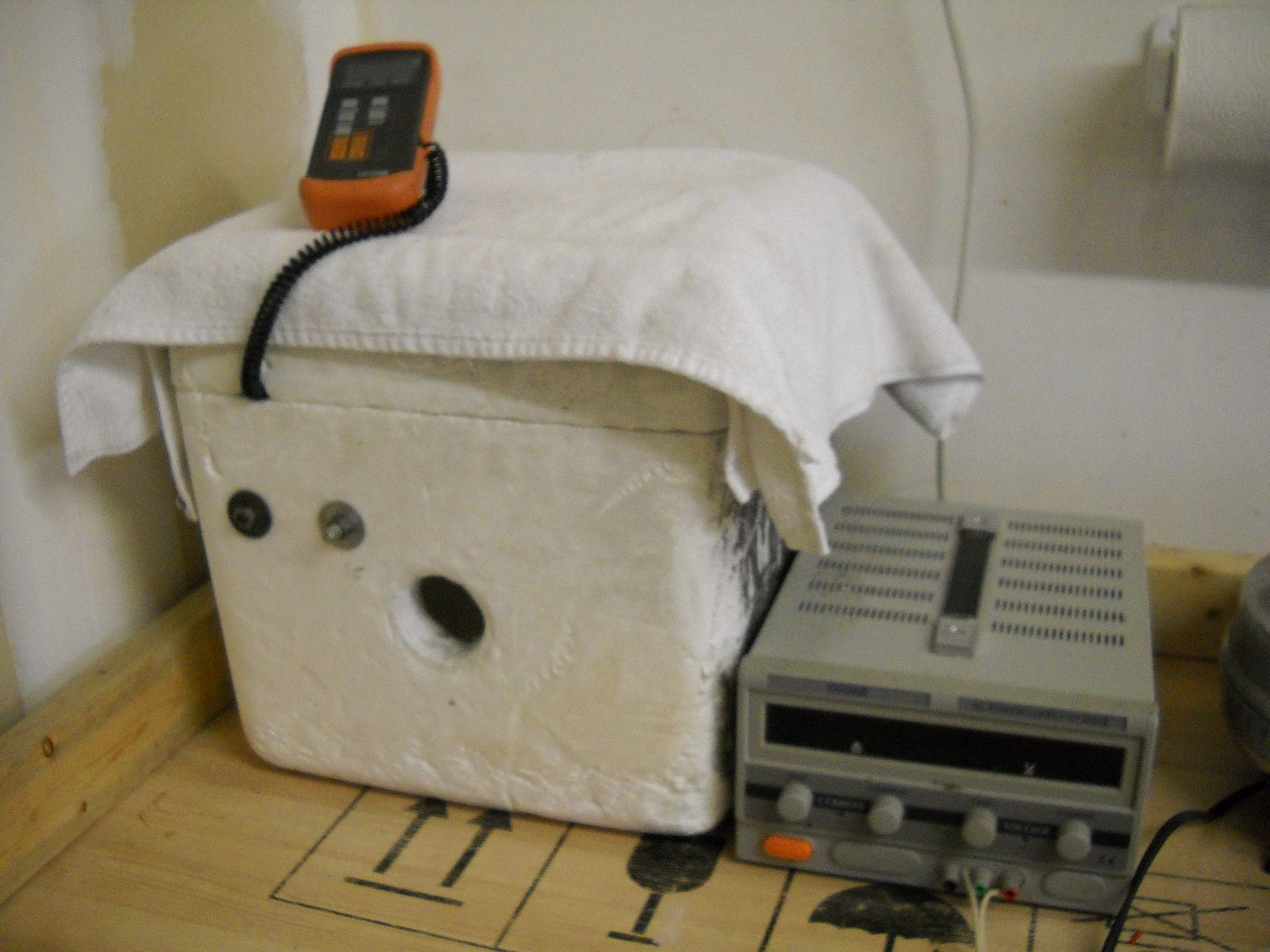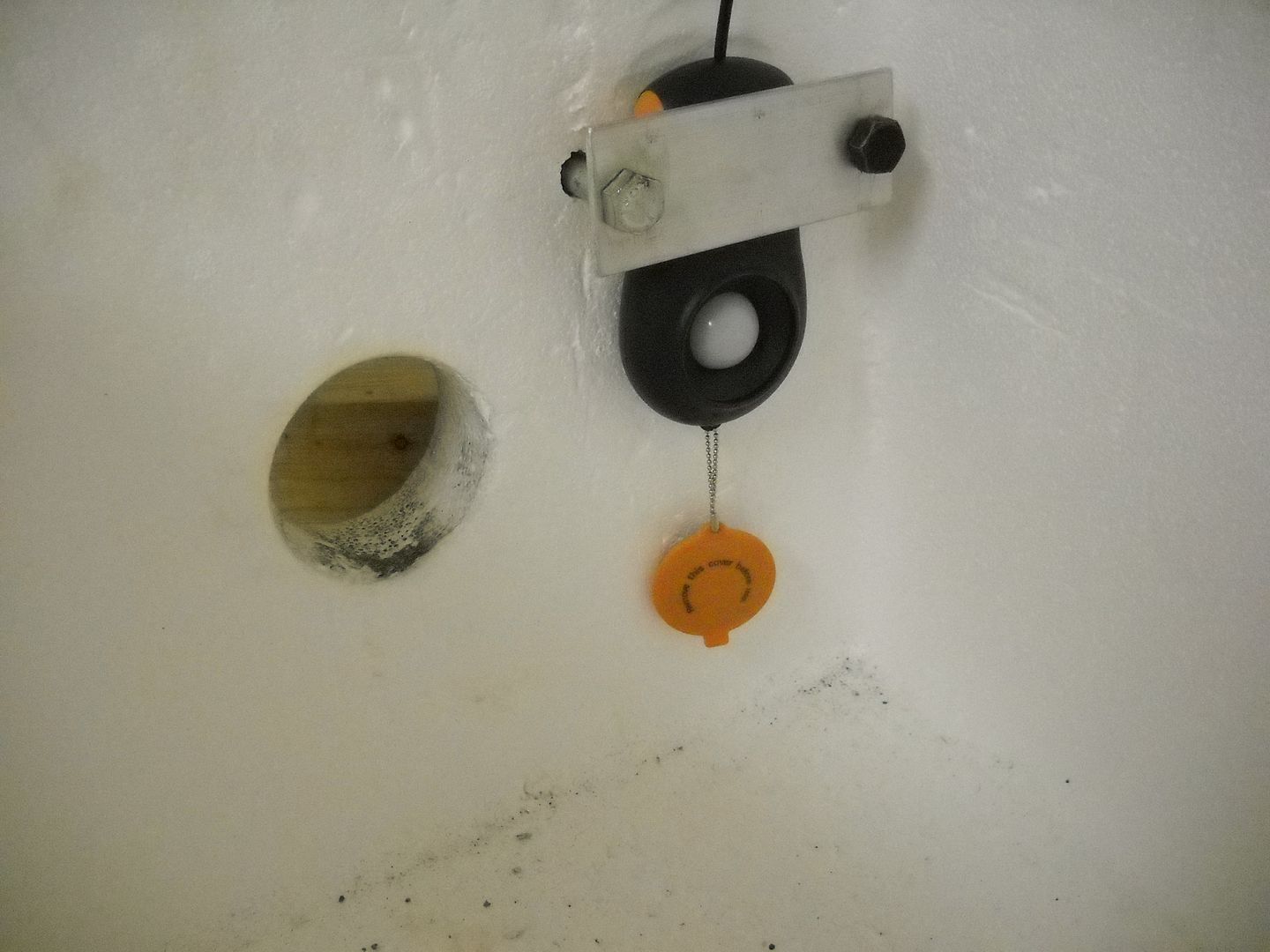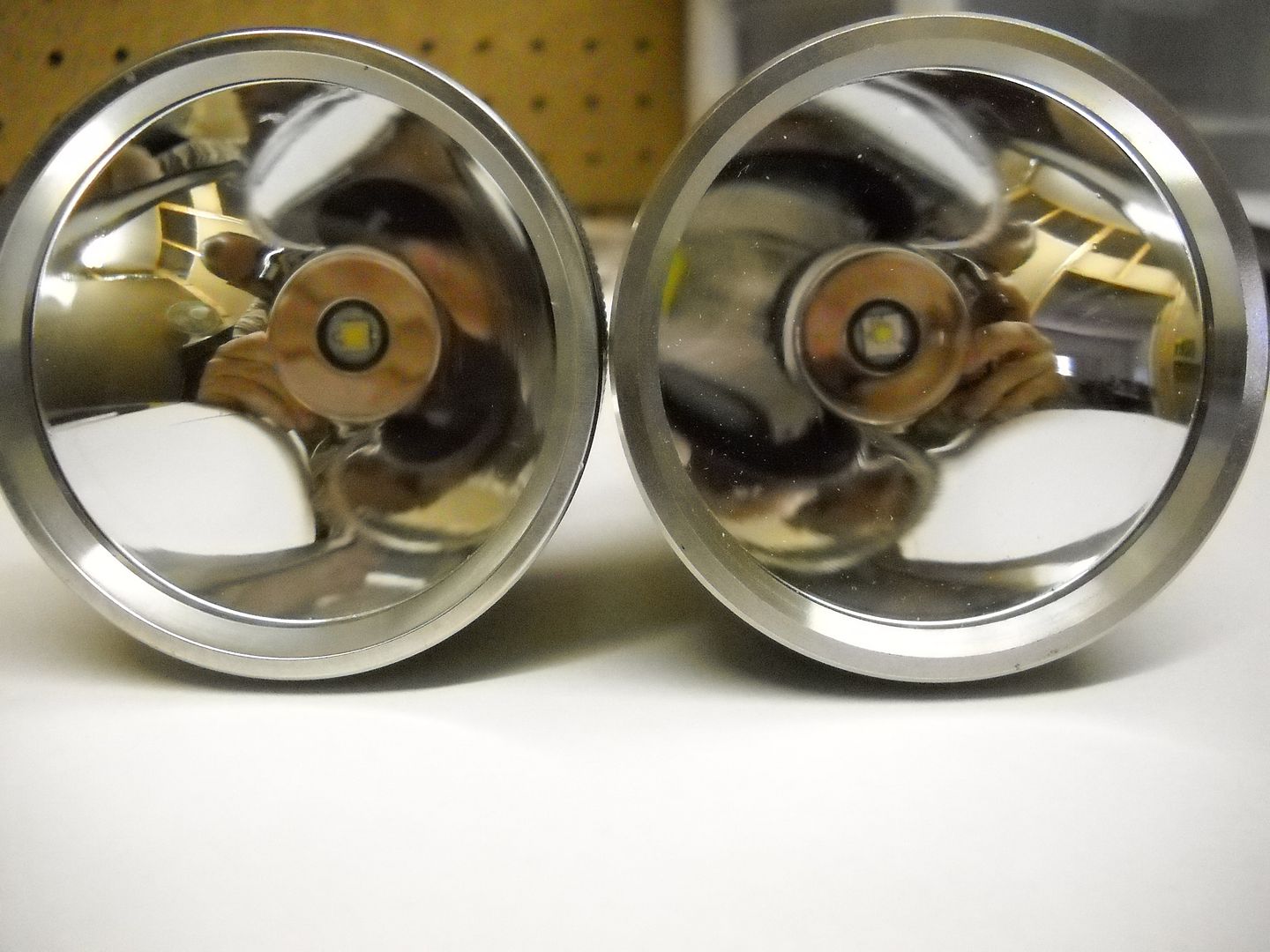....................................Apples to Apples to Apples :)........................................
Ok men. Let me start by saying that I do apologize for the misinformation given in my first post about the output of this emitter. When I did the dead fall test just sitting the emitter in the middle of my light box I had not originally planned to post lumen numbers, but after seeing a side by side with an XML I assumed they would be close.
This was not only incorrect, it was a lazy and foolish thing to do and again I am sorry.
That said I decided that it was time to compile some hard data so I spend the past several days doing just that. I wanted to get a true apples to apples comparison for this emitter vs XML2 and also produce some solid numbers for our application. So off we go.
The first step in this was to use my light box as it was intended. With the emitter shooting from the side rather than just placed in the box.
My setup is not exactly a "sphere" but its not a pipe either. Its more of a glorified ceiling bounce. As to its effectiveness I will let each judge for himself based on the data below.
Here is a pic of my complete setup.

Its a Styrofoam ice chest with the sensor mounted on the inside wall.

Phase 1: Calibration
To calibrate with this setup I have always used a light that was tested by CPF member ti-force for me several years ago.
I also tested 2 other lights I had with known output from a reputable manufacturer. My 4sevens X10 and AA2. My versions are older ones but I still have the boxes for output numbers.
All measurements are taken at the one minute mark because that is where I think the most realistic numbers can be expected. This gives the light time to level off. If I am not mistaken true ansi readings are taken between 30-120 seconds.
| Lights used for calibration 8/10/15 |
|
|
Measured FC |
multiplier from FC |
|
| |
|
|
|
|
|
| Shorty mag as tested by Ti-force 875 lumen |
|
|
2710 |
0.322 |
|
| 4sevens X10 640 lumen |
|
|
2000 |
0.32 |
|
| 4sevens Quark AA2 280 lumen |
|
|
914 |
0.306 |
|
| Test #2 Shorty mag 875 lumen |
|
|
2710 |
0.322 |
|
All of the lights tested very near rated output. The far column is the multiplier derived from foot candles. With those 4 sets of numbers to go off of I decided to use .32 as my multiplier for the following tests.
Phase 2: Testing bare emitters
Now for the output tests. All of these are bare emitters reflowed to a copper Sinkpad reflowed to a solid copper bar.
| Cree XM-L2 U4 |
|
Measured Lumens |
|
Cree Chart |
|
| 1000ma |
|
432 |
|
459 |
|
| 1500ma |
|
620 |
|
629 |
|
| 2000ma |
|
793 |
|
824 |
|
| 2500ma |
|
900 |
|
|
|
| 3000ma |
|
1100 |
|
1122 |
|
| 3500ma |
|
1238 |
|
----------------------- |
|
| 4000ma |
|
1369 |
|
----------------------- |
|
| 4500ma |
|
1478 |
|
----------------------- |
|
| 5000ma |
|
1587 |
|
----------------------- |
|
| Cree XM-L2 U4 de-dome |
|
Measured Lumens |
|
Cree Chart |
|
| 500ma |
|
201 |
|
N/A |
|
| 1000ma |
|
377 |
|
|
|
| 1500ma |
|
550 |
|
|
|
| 2000ma |
|
707 |
|
|
|
| 2500ma |
|
838 |
|
|
|
| 3000ma |
|
972 |
|
|
|
| 3500ma |
|
1091 |
|
|
|
| 4000ma |
|
1203 |
|
|
|
| 4500ma |
|
1312 |
|
|
|
| 5000ma |
|
1414 |
|
|
|
| Poof! |
|
|
|
|
|
| Cree XHP-35 HI C4 |
|
Measured Lumens |
|
Cree Chart |
|
| 500ma |
|
675 |
|
641 |
|
| 1000ma |
|
1177 |
|
1116 |
|
| 1500ma |
|
1577 |
|
----------------------- |
|
| 2000ma |
|
1888 |
|
----------------------- |
|
| 2500ma |
|
2010 |
|
----------------------- |
|
| |
|
|
|
|
|
Now in the beginning I said apples to apples to apples right. So some of you may be wondering where I got the "Crees Number" for the U4 bin XML2.
Its simple. If you look at the chart and see that when they up the bin each time starting at the base drive current of 700ma @ 85C, 20 lumens per bin is added. So I extend that to the U4 and cross referenced it with the lumens to lux graph for the higher currents.
I was able to extend the XML2 one out to 3 amps but for the XHP-35 I was not because the current table does not extend above 1050ma for that emitter, and I did not want to speculate on the exact rate of decay.

Phase 3: Testing inside a light
For this I happened to have a pair of new lights that I could use with the same reflector and basic head. My Shadow JM26 and TC 500. Since the heads of these and my made from scratch project light with an XHP-35 in all had bigger heads than my sphere was built for I cut a larger hole in it and recalibrate. This was also on another day ( the temp in my shop varies around 12 deg F from day to day. From the recalibration I had a multiplier of .336 which I rounded to .34 so the tests from here are using that.
The subjects.

For these 2 tests I powered both lights from my bench supply for a constant current.
| Cree XM-L2 U4 de-dome in Shadow JM26 head |
|
|
(bench supply used) |
|
| 1000ma |
|
380 |
|
|
| 2000ma |
|
683 |
|
|
| 3000ma |
|
969 |
|
|
| 4000ma |
|
1179 |
|
|
| 4500ma |
|
1285 |
|
|
| Cree XHP-35 HI C4 in Shadow TC500 ( bench supply used) |
|
|
|
| 1000ma |
|
1030 |
|
| 2000ma |
|
1526 |
|
| 2500ma |
|
1564 |
|
I also decided to take some lux readings from these lights and from the Arc of Josiah which uses the XHP-35 HI and a courui DO1 reflector.
Shadow XML2 lux @ 1 min was 238,500
SHadow XHP35 lux @ 1 min was 203,750
Arc of Josiah XHP35 lux at 1 min was 255,750
Here is a beam shot of both lights side by side on the wall.
Left XHP-35 HI and Right XML2 de-dome

Phase 4: Summary
It is true that this emitter does produce approximately 21% more light in a flashlight than XML2.
In this one test it does NOT produce more lux in spite of the SC5 platform vs an XML2 de-dome in the same setup.
Visually the hotspots in both light were very smooth and fairly close in size. Side by side the XML2 produced a much more "laser like" effect though because of a tighter beam and less spill.
Visually at long range outdoors the XML2 had a sharper hot spot for the same reason. The range of the XHP-35 is about the same, but the spill surrounding the hot spot is much brighter so depending on your application and preference the XHP-35 may still be a better choice.
Finally I am in no way claiming to be one of the foremost experts in this field. Nor am I trying to dispute anyone elses findings. I am simply offering this as a set of hard data produced for a point of reference.
Hope you enjoyed the show





